Uncensored has lately been delving heavily into the complex tangle of connections between Bitcoin, the Great Reset, DNA data harvesting, the COVID agenda, and related rDNA-modifying vaccines. The topic of Gene Editing and associated jargon can be confusing to layperson, so while it does not delve into the controversies and agendas, we present the following article and link as a useful, easy to understand resource that may help understand the subject and where the technology is headed. Martin.

A comprehensive guide for understanding CRISPR and Gene Editing
Introduction
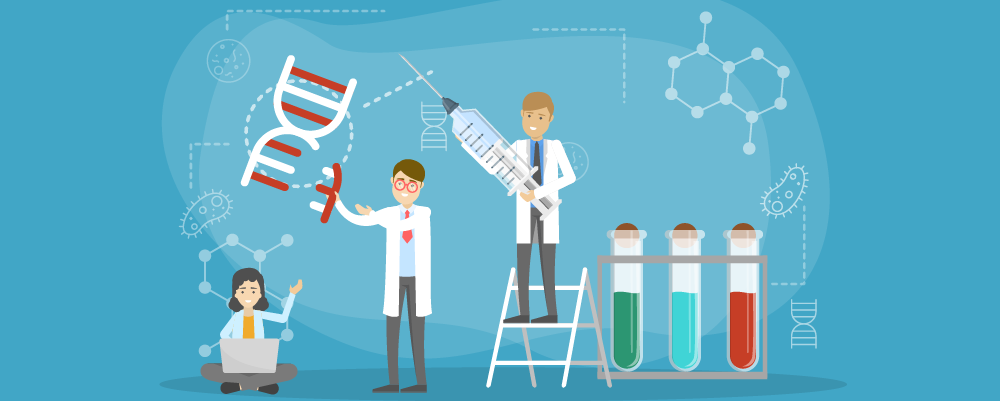
The history of gene editing may not be a long one, but it is absolutely fascinating. In less than 80 years humanity has gone from understanding next to something about our DNA to being able to selectively edit and combine genes. We can clone animals and are on our way to being able to eradicate hereditary health conditions.
One of the most exciting developments in this field in the last decade has been the invention of CRISPR-CAS9 tools. These tools harness proteins to accurately remove and replace problematic genes. These systems are more accurate than anything that has come before it has cut the time and costs involved in these experiments drastically.
Today we’ll be talking you through who the CRISPR-CAS9 system works, how it was discovered, and what it could do for us in the future. We’ll also be taking a deep dive into the history of gene editing. Studying the past will help you to understand how fast science has come in the last 80 years, and how revolutionary tools like CRISPR could be.
History of gene editing

The only logical place to start this guide is by looking at the history of gene editing. This is a rich history full of amazing men and women pushing science to its very limits in order to help humanity. Their studies have changed the way we understand what it means to be human, the way we treat diseases, and even the way we eat.
We’re going to look at some of the most important moments in the history of gene editing that will help us understand why the industry looks the way it does today.
Pre-1960s
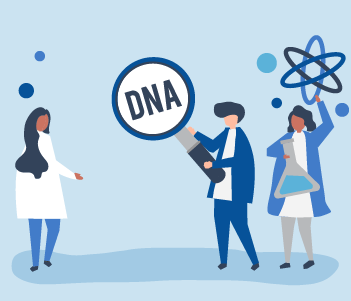
The history of gene editing really kicks off in the 1960s. However, before this point, there were two discoveries that made all of this possible. That is where we shall begin.
1953 – A team of scientists discovers the Double Helix
Thanks to the pioneering work of Rosalind Franklin; James Watson and Francis Crick discovered the double helix structure of our DNA.
Franklin had been producing x-rays of DNA at the time, her work led to our modern-day understanding of how our DNA works.
Watson and Crick noted the interlocking, ladder-like structure of our curving DNA. This discovery laid the foundation for everything to come.
1958 – Arthur Kornberg produces DNA in a test tube, a world first
Around the same time as the double helix was discovered, it became possible to synthesize all five nucleotides. This was when Arthur Kornberg turned his attention to the rest of the DNA structure. Less than a year after learning how to polymerase DNA from bacteria Kornberg had produced the first set of in vitro DNA.
This work won Kornberg a Nobel prize and many other career accolades.
1960s
Welcome to the 1960s, gene related research is just coming into fashion in Silicon Valley. New developments are being made in every direction including new discoveries concerning the structure and function of prokaryotic. Progress is even being made in the world of viral genetic material.
1962 – Green Fluorescent Protein (from Jellyfish) enables scientists to study cellular processes that were previously invisible to them
The Aequorea Victoria jellyfish provided scientists with GFP (green fluorescent protein), this allowed scientists to study processes they could not previously see.
When exposed to long wave blue light GFP glows green. This protein was able to reveal undiscovered chemical processes that lead to Osamu Shimomura, Martin Chalfie and Roger Tsien winning a Nobel prize for their contributions to chemistry.
1967 – Scientists perfect DNA ligation links forming recombinant DNA for the first time
Thanks to the work done by Gellert, Lehman, Richardson, and Hurwitz laboratories in the early 60s, this milestone of molecular biology was reached. They discovered a way of making DNA form of a phosphodiester bond which allowed the parts of the helix to join together.
This was the work that began the process of gene splicing.
1968 – Scientists discover restriction enzymes
One day Weren Arber noticed that a group of bacteria he was studying had a fascinating method of protecting themselves against bacteriophage infection. The bacteria were cutting the bacteriophage off themselves using an unknown chemical. Arber began to research how the chemical knew the difference between the bacteria and the infection.
He believed that two types of chemicals when the infection began – a ‘modification’ enzyme that could tell what was an infection and what was part of the host, and a ‘restriction’ enzyme that cut away the infection.
Later when studying e.coli he was able to prove his theory correct.
1970s
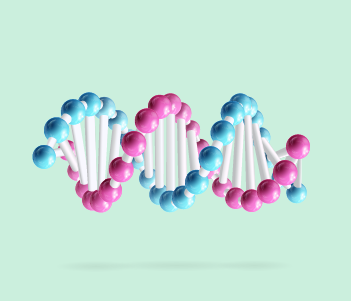
After the explosion of DNA-based research in the 1960s, the 1970s continued to see vast amounts of progress being made.
Here we witnessed the first chimeric recombinant DNA cloning SV40 molecule into plasmid DNA.
Where the 60’s laid the foundations, we saw the 70’s start to build an impressive structure.
1970 – Hamilton Smith discovers Type II restriction enzymes
In 1970, whilst studying the bacterium Haemophilus influenzae Rd, Smith discovered Type II restriction enzymes (Himd II).
This was quickly followed by the discovery of 6 base pair phage DNA sequences in Himd. The work that Smith and his team did later became the groundwork for the genetic engineering therapy that became CRISPR.
1971 – Gene Splicing breakthroughs create new opportunities to create Recombinant DNA (rDNA)
Using a method now known as the ‘cut and slice’ technique, Paul Berg, broke new ground and became the first person to create recombinant DNA from two different species.
This discovery that DNA from different species could be ‘spliced’ together paved the way for nearly all the genetic engineering we know today. Without Berg, this field would not exist.
Berg was later awarded a Nobel prize for “his fundamental studies of the biochemistry of nucleic acids, with particular regard to recombinant DNA.”
1972: DNA mapping is made possible by Type II restriction enzymes
Daniel Nathans used restriction enzymes on the SV40 viral genome. By doing this he discovered it was possible to slice it into 11 different parts. Taking his experiments further Nathans found that restriction enzymes could play a huge part in DNA mapping.
His experiments opened doors for further researchers to fully map chromosomes within DNA and all the discoveries that came with that. Nathans was awarded a Nobel prize for his contributions to the world of medicine in 1978.
1974: Genetic engineering experiments a banned by the National Academy of Sciences, pending an ethical review
As the field of genetic engineering began to expand and make huge leaps forward, the National Academy of Sciences called for a moratorium on the field. The public was beginning to get nervous about the experiments, worrying that scientists would use their new discoveries to create superbugs or partake in eugenics.
During this ban Paul Berg held a conference, attended by over 100 leaders in the field, to discuss the ethical parameters of genetic engineering.
At this conference, Joshua Lederberg shared his vision for a future where genetic engineering could cure many diseases that were killing thousands at the time.
Many claim this conference is what led to the change in opinions surrounding molecular genetic experimenting.
1975: Merging of myeloma cells leads to revolutionizing modern genetic diagnostics and immunology treatments
After working separately on B cell experiments, scientists George Kohler & César Milstein teamed up. Their work together led to the discovery that merging myeloma cells would lead to fast reproducing, antibody growing cells.
Their discovery led to a complete change in modern diagnostic methods and treatments.
1980s

The 1980s is the era of using genetic engineering to solve human problems through vaccines, particularly doing this using human DNA.
1981: DNA microinjection used on an animal for the first time
In 1981, Ohio University became the first lab in the world to perform DNA microinjection on an animal.
In this experiment, they created a transgenic animal (this simply means an animal that has had its DNA ‘spliced’ with DNA from another animal).
This experiment was led by Thomas Wagner.
He and his team introduced DNA from a rabbit into a mouse. This was a founding experiment in the world of transgenic animal experiments.
1982: The first synthetic drug is manufactured and put on the market
Up until 1982, all the insulin that was being used to treat those with Type 1 diabetes needed to be harvested from animals. The team at Genentech, led by Dennis Kleid, was able to produce synthetic insulin identical to human insulin and much more effective than animal insulin.
Not only was this saving human lives, but this development was believed to save the lives of 56 million animals a year. This was a breakthrough moment for health boards approving synthetic medicine.
1983: polymerase chain reaction opens new doors
The polymerase chain reaction (PCR) was discovered in 1983. This system can be used to make specific DNA sequences to make copies of itself. This reaction can be used to create thousands of copies. Some sequences can even make millions of copies of themselves.
It was this discovery that made future DNA experiences possible. Being able to do multiple experiments on identical pieces of DNA made experiments with DNA less time consuming and far less expensive. Previously, cloning DNA involved cutting the DNA into thousands of pairs, and regrowing them in bacteria colonies.
1985: Recombinant vaccines are approved by the first medical body
Before 1986, doctors were using a vaccine derived from blood to treat Hepatitis B. In around 1983, Pablo D. T. Valenzuela began to develop a yeast-based recombinant vaccine to treat the illness.
This vaccine was so successful that the blood vaccines were removed from the medical practice. This vaccine led to a wave of newly formulated recombinant vaccines, some of which are still in use today.
1998: GMO crop trials begin
A GMO strain of corn was approved for sale in 1998. This corn had been modified to produce higher yields, put off pests, and be unaffected by the use of pesticides (this has come to have a negative effect on the ecosystems on American farms).
1990s
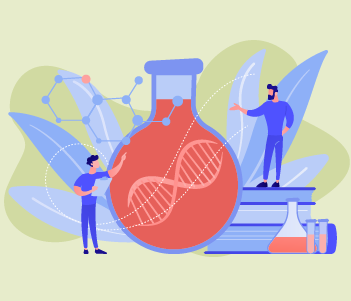
In this decade we see the birth of the Human Genome Project.
This project, over 13 years mapped out over 20,000 genes.
The work done in this decade laid the groundwork for the world-changing research we are witnessing today.
1990: Human Genome Project is launched
This thirteen-year-long project is the foundation for nearly all modern day molecular biology.
During this project over 20,000 genes were discovered and mapped out.
1993: CRISPR cells are discovered
In 1993 Francisco Mojica discovered CRISPR (clusters of regularly interspaced short palindromic repeats) cells. Over the next 25 years, his work in this subject created a wealth of knowledge that was drawn upon to create the CRISPR-CAS9 genome editing tools.
1994: GMO tomato company tanks
This was the year that we saw the second major launch of GMO crops. These tomatoes were engineered to never over ripen. However, the company eventually tanked after consumers began to grow concerned about the effects GMO could have on their food and them.
1996: Dolly the Sheep
In one of the most impressive and shocking feats of genetic engineering, scientists used a stem cell to clone an entire sheep. The sheep was named Dolly. In the following decade, scientists began to clone endangered animals.
1999: The first human Chromosome is sequenced
As part of the Human Genome Project, scientists completely map out a chromosome for the first time. This chromosome was Chromosome 22. The methods that were used to achieve this are still employed today (although they are now done electronically).
2000s

In this decade we began to see the true benefits of the work done by the Human Genome Project.
Genetic engineering turned its eyes towards understanding and curing genetic diseases.
We see the first cloning of an endangered animal, and the approval of many life changing genetic treatments.
2001: Gene-targeted drug therapy is approved for the first time
This year the FDA approved the first gene-targeting drug. This drug was a treatment for adults with Leukemia and is still used today.
2003: The first GMO pet goes on sale
UK pet store Pets At Home begins selling ‘Glow-fish’. These GMO fish were able to glow in the dark, thanks to the addition of bioluminescence. This type of technology has since been harnessed to help farmers in developing countries.
2006: First preventative cancer vaccine approved
In its clinical trials, the HPV vaccine was proved to be 99% effective at preventing pre-cancers from developing. These pre-cancers cause 70% of cervical cancer cases.
After its approval, the vaccine was rolled out to teenage women across the world. It was even administered on mass in UK schools. It is still currently the only approved preventative cancer vaccine.
2006: Stem cell research jumps forward
In the same year, the first iPSCs ( induced pluripotent stem cells) were created. Dr. Shinya Yamanaka and his team isolated fibroblasts and they were able to reprogram them into a stem cell state. This discovery opened up a new world of stem cell research.
2010s

In the 2010s genetic breakthroughs happen faster than the pioneers of the 1960s could have ever imagined.
In this decade we see the invention of CRISPR and the first approval of genome editing on humans… with very promising results.
2010: Synthetic bacteria becomes world’s first living synthetic creation
After years of experimentation, Craig Venter and his team were able to create an M. capricolum cell synthetically.
This bacteria was the first synthetic life form (meaning something that was not born or evolved).
2011: TALEN is discovered
Further experiments allowed scientists to build on the revolutionary work of ZNFs, and discovered TALENs. TALENs are more accurate than ZNFs, and are less cytotoxic to the host cells.
2012: The CRISPR tool is born
Jennifer Doudna and Emmanuelle Charpentier develop CRISPR, a genome editing tool that heralds a new age of molecular biology and medicine. Early experiment results suggest CRISPR treatment could replace chemotherapy when approved for human use.
2014: Gene drives?
As CRISPR continues to revolutionize the world of molecular biology, the field begins to talk about what could be done with a tool like this. Kevin Esvelt suggests that CRISPR could be used to great gene drives – these could ‘bypass evolution’.
Esvelt suggests that they could be used to eradicate malaria from the mosquito population. But that there are many ways that gene drives could be used dangerously. And that extensive testing should take place before releasing any experience into a real ecosystem.
2015: GMO salmon sold in Canada
GMO had been happening to crops for years, but 2015 marked the first GMO animal product to hit the market. In Canada, a company began selling GMO salmon and claimed that products like this could solve the world’s overfishing problems.
2015: Controversial CRISPR trial takes place on human embryo
Scientists in China attempted to remove a hereditary blood disease from a human embryo. This was three years before any government approved human CRISPR trials. The experiment was not covered by Western journals who labeled it unethical.
2017: CAR-T therapy is approved for human trials
Two different CAR-T experiments were approved in 2017. One to treat children with Leukemia and the other to treat adults with Lymphoma. Trials on animals showed that CAR-T could be a non-toxic replacement for Chemotherapy. Multiple studies showed CAR-T’s ability to completely destroy tumors in less than two weeks.
2018: Human CRISPR trials are approved
Two leading CRISPR development companies are given permission to trial human CRISPR treatments together. These experiments were designed to treat Sickle Cell disease. (Good news about this trial is coming later in the article)
2019: Prime editing experiments prove successful
This new extension of the CRISPR technique halved the size of the smallest incision thought possible. This technique makes it possible to make single stranded cuts when previously only double stranded cuts were considered possible. Reducing the damage to the DNA when cut to next to nothing.
Present

2020 was a huge year for CRISPR.
Emmanuelle Charpentier and Jennifer Doudna won the Nobel Prize for their time spent developing CRISPR and their contributions to Chemistry.
In the middle of 2020, a series of promising CRISPR trial results were released.
The first person to undergo Sickle Cell CRISPR treatment, Victoria Gray, was showing very positive results post-treatment.
Later in the year, results showed that all 10 people who had undergone this treatment were showing huge signs of improvement.
All showed improvements in fetal hemoglobin levels, no longer required blood transfusions, and had long pain-free periods.
CRISPR

Now that we have covered the history of genetic editing, it’s time to take a deeper look into CRISPR. In this section we will be covering all the basics you need to know about CRISPR to understand the more complex things we will cover later in the article.
What does it stand for?
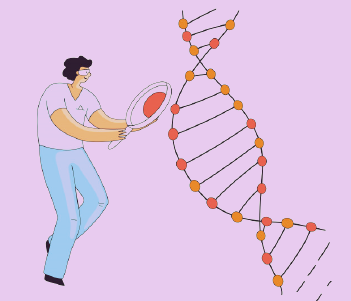
CRISPR (which is pronounced “crisper”) is both a DNA cycle and a shorthand for the CRISPR-CAS9 genome editing technology, and stands for the following:
C – Clustered
R – Regularly
I – Interspaced
S – Short
P – Palindromic
R – Repeats
CRISPR is the name of the bacterial defense system that makes up the basis of the CRISPR-CAS9 genome editing system technology.
What is CRISPR?
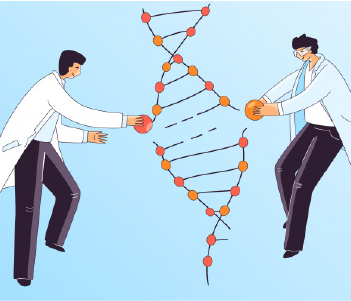
As mentioned above CRISPR is the moniker of the bacterial defense system which the CRISPR-CAS9 genome editing technology is based on.
CRISPR is often used in the industry as a general name to cover any type of technology that targets and edits long stretches of DNA at specific points.
This can lead to a little confusion when trying to view the field of genome editing from the outside.
So, how were CRISPR cells discovered?
Francisco Mojica first discovered CRISPR in archaea. He believed that CRISPRs were a key part of bacterial immune systems.
This was later proved to be correct when CRISPRs were discovered in bacteria.
They are made up of a sequence of repeating genetic codes, in between the reparations are remnants of genetic code from previous threats the bacteria has encountered. Mojica believed that these old DNA parts were kept to allow the immune system to identify and destroy attackers quickly.
These were later developed into a genome editing and diagnostic system. Which we will cover more next.
What is CAS9?
In this section, we will cover two things: what CAS9 is and what CRISPR-CAS9 is.
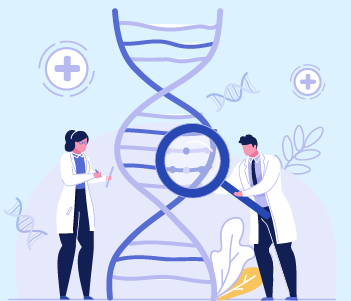
What is CAS9?
CAS9 is the protein at the heart of the CRISPR system.
CAS9 is able to take on a gRNA (guide RNA) and remove any genes that match this gRNA from the subject’s DNA.
Originally, this protein was a part of bacterial immune systems.
Now it has harnessed to be an efficient and accurate tool in the world of genome editing.
What is CRISPR-CAS9?
CRISPR-CAS9 is a trailblazing genome editing tool developed by Jennifer Doudna, Emmanuelle Charpentier, and their team.
This tool harnesses the ability of the CAS9 protein. With CAS9 they are able to edit genes in a non-toxic, non-invasive way. Their system has revolutionized the way we approach genome editing in the 21st century.
CRISPR’s main selling point is its ability to precisely target and cuts genetic material. How precisely? Well, the difference is similar to trying to pick up a grain of rice with tweezers and 2 boxing gloves.
When was CRISPR-CAS9 developed?

Jennifer Doudna, Emmanuelle Charpentier, and their team developed their CRISPR-CAS9 in the early 21st century.
Their work builds on the discovery of CRISPR cells in e-colli and yogurt.
In 2012 Doudna and Charpentier launched their CRISPR-CAS9 system.
To this day there are still a huge amount of rules and regulations surrounding the use of CRISPR.
This is mostly the result of scientific research that was done in Russia and China in the early days of CRISPR-CAS9 that was deemed unethical by the scientific community.
Despite these restrictions, most industries are still backing CRISPR as the future of microbiology.
And in the last 5 years, we have seen a series of human trials being approved. 2020 gives us a series of really promising results for the first set of trials.
What is the goal of CRISPR-CAS9 technology?

CRISPR truly has a limitless potential and for that reason, every major industry is investing heavily in it. From biofuel companies to people who sell legal highs. We could see CRISPR-CAS9 having an impact on our lives at every level.
CRISPR could be used for any of the following:
- Treating terminal diseases
- Producing sustainable biofuels
- For eradicating animal and insect-borne diseases
- Creating bacteria that could eat and digest non-biodegradable materials like plastics
- Cloning endangered and extinct species
- Creating crops that can be grown in arid conditions
With the invention of the CRISPR-CAS9 tool, gene editing has become easier, cheaper, more accurate and less dangerou,s. The possibilities are truly endless.
How does CRISPR gene editing work?

Despite taking decades to develop, CRISPR gene editing is a surprisingly simple process. In the following section we were going to talk you through the process of the CRISPR-CAS9 gene editing tool.
As mentioned before, these systems are currently going through trials for treating sickle cell disease and leukemia in humans. We will be focusing our example around that process.
Here are some important terms to be aware of:
gRNA – guiding RNA, this will be a copy of the gene that scientists want to remove
crRNA – a gene to replace the genes that are being removed…

Get your copy from our Online Store or your local book and magazine retailer
Australian Retail Locations » Uncensored Publications Limited
New Zealand Retail Locations » Uncensored Publications Limited
As censorship heats up and free thought becomes an increasingly rare commodity, we appeal to our readers to support our efforts to reach people with information now being censored elsewhere. In the last few years, Uncensored has itself been censored, removed from the shelves of two of our biggest NZ retailers – Countdown Supermarkets and Whitcoulls Bookstores – accounting for 74% of our total NZ sales.
You can help keep the Free Press alive by subscribing and/or gifting a subscription to your friends and relatives.








